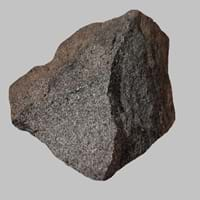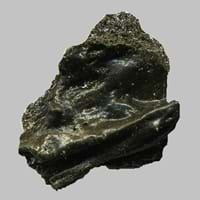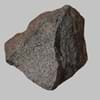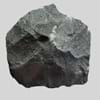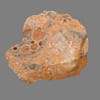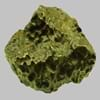Definition
Pyrolite is an igneous rock consisting of about three parts of peridotite and one part of basalt
Tachylite is a vitreous form of basaltic volcanic glass. This glass is formed naturally by the rapid cooling of molten basalt
Origin
Pike County, U.S
Iceland
Discoverer
Unknown
Unknown
Etymology
From the chemical and mineralogical composition of the upper mantle of the Earth
From German Tachylite, from tachy- + Greek lutos soluble, melting
Class
Igneous Rocks
Igneous Rocks
Sub-Class
Durable Rock, Medium Hardness Rock
Durable Rock, Medium Hardness Rock
Other Categories
Coarse Grained Rock, Opaque Rock
Coarse Grained Rock, Fine Grained Rock, Medium Grained Rock, Opaque Rock
Texture
Phaneritic
Vitreous
Color
Dark Greenish - Grey
Black, Dark Brown
Durability
Durable
Durable
Appearance
Rough and Shiny
Glassy
Interior Uses
Decorative Aggregates, Interior Decoration
Decorative Aggregates, Interior Decoration
Exterior Uses
As Building Stone, As Facing Stone, Garden Decoration, Paving Stone
As Building Stone, As Facing Stone, Garden Decoration, Paving Stone
Other Architectural Uses
Curbing
Curbing
Construction Industry
As Dimension Stone, Cobblestones
Cutting Tool, Knives, Landscaping, Scrapers
Medical Industry
Not Yet Used
Not Yet Used
Antiquity Uses
Artifacts, Monuments, Sculpture
Artifacts
Commercial Uses
Creating Artwork, Gemstone, Jewelry, Source of Chromite, Platinum, Nickel and Garnet, Source of Diamonds
Cemetery Markers, Creating Artwork
Types
Dunite, Wehrlite, Harzburgite, Lherzolite
Not Available
Features
Constitutes upper part of the Earth's mantle, Generally rough to touch, Is one of the oldest rock
Available in Lots of Colors and Patterns, Clasts are smooth to touch, NA
Archaeological Significance
Monuments
Used
Not Yet Used
Famous Monuments
Data Not Available
Not Applicable
Sculpture
Used
Not Yet Used
Famous Sculptures
Data Not Available
Not Applicable
Figurines
Used
Not Yet Used
Formation
Pyrolite is a fine-grained, hard rock which is a type of metasomatite, essentially altered basalt. It forms with or without crystallization, either below the surface as intrusive rocks or on the surface as extrusive rocks.
Tachylite is a fine-grained, hard rock which is a type of metasomatite, essentially altered basalt. It forms with or without crystallization, either below the surface as intrusive rocks or on the surface as extrusive rocks.
Mineral Content
Amphibole, Chromite, Garnet, Magnesium, Olivine, Phlogopite, Plagioclase, Pyroxene
Feldspar, Olivine
Compound Content
Ca, Fe, Mg, Potassium, Silicon Dioxide, Sodium, Titanium Dioxide
Fe, Mg
Types of Metamorphism
Burial Metamorphism, Cataclastic Metamorphism, Contact Metamorphism, Hydrothermal Metamorphism, Impact Metamorphism, Regional Metamorphism
Burial Metamorphism, Cataclastic Metamorphism, Contact Metamorphism, Hydrothermal Metamorphism, Impact Metamorphism, Regional Metamorphism
Types of Weathering
Biological Weathering, Chemical Weathering, Mechanical Weathering
Biological Weathering, Chemical Weathering, Mechanical Weathering
Types of Erosion
Chemical Erosion, Coastal Erosion, Glacier Erosion, Sea Erosion, Water Erosion, Wind Erosion
Chemical Erosion, Sea Erosion, Water Erosion, Wind Erosion
Grain Size
Coarse Grained
Medium to Fine Coarse Grained
Fracture
Irregular
Conchoidal
Porosity
Less Porous
Less Porous
Cleavage
Imperfect
Not Available
Toughness
2.1
Not Available
Specific Gravity
3-3.01
2.4
Transparency
Translucent to Opaque
Opaque
Density
3.1-3.4 g/cm3
3.058 g/cm3
Resistance
Heat Resistant, Pressure Resistant, Wear Resistant
Heat Resistant, Impact Resistant, Wear Resistant
Deposits in Eastern Continents
Asia
China, India, Indonesia, Kazakhstan, Russia, South Korea, Thailand, Turkey
Cambodia, Russia, South Korea
Africa
Morocco, South Africa
East Africa
Europe
Finland, France, Georgia, Germany, Great Britain, Italy, Kazakhstan, Netherlands, Norway, Spain, Switzerland, Venezuela
England, Germany, Hungary, Iceland, Scotland, Sweden
Others
Not Yet Found
Hawaii Islands
Deposits in Western Continents
North America
Canada, USA
USA
South America
Brazil
Not Yet Found
Deposits in Oceania Continent
Australia
New Zealand, Western Australia
Victoria
Pyrolite vs Tachylite Characteristics
Though some rocks look identical, they have certain characteristics which distinguish them from others. Characteristics of rocks include texture, appearance, color, fracture, streak, hardness etc. Pyrolite vs Tachylite characteristics assist us to distinguish and recognize rocks. Also you can check about Properties of Pyrolite and Properties of Tachylite. Learn more about Pyrolite vs Tachylite in the next section. The interior uses of Pyrolite include Decorative aggregates and Interior decoration whereas the interior uses of Tachylite include Decorative aggregates and Interior decoration. Due to some exceptional properties of Pyrolite and Tachylite, they have various applications in construction industry. The uses of Pyrolite in construction industry include As dimension stone, Cobblestones and that of Tachylite include Cutting tool, Knives, Landscaping, Scrapers.
More about Pyrolite and Tachylite
Here you can know more about Pyrolite and Tachylite. The life cycle of a rock consists of formation of rock, composition of rock and transformation of rock. The composition of Pyrolite and Tachylite consists of mineral content and compound content. The mineral content of Pyrolite includes Amphibole, Chromite, Garnet, Magnesium, Olivine, Phlogopite, Plagioclase, Pyroxene and mineral content of Tachylite includes Feldspar, Olivine. You can also check out the list of all Igneous Rocks. When we have to compare Pyrolite vs Tachylite, the texture, color and appearance plays an important role in determining the type of rock. Pyrolite is available in dark greenish - grey colors whereas, Tachylite is available in black, dark brown colors. Appearance of Pyrolite is Rough and Shiny and that of Tachylite is Glassy. Properties of rock is another aspect for Pyrolite vs Tachylite. The hardness of Pyrolite is 5.5-6 and that of Tachylite is 5.5. The types of Pyrolite are Dunite, Wehrlite, Harzburgite, Lherzolite whereas types of Tachylite are Not Available. Streak of rock is the color of powder produced when it is dragged across an unweathered surface. The streak of Pyrolite is white while that of Tachylite is vermilion. The specific heat capacity of Pyrolite is 1.25 kJ/Kg K and that of Tachylite is 0.56 kJ/Kg K. Depending on the properties like hardness, toughness, specific heat capacity, porosity etc., rocks are resistant to heat, wear, impact, etc.Pyrolite is heat resistant, pressure resistant, wear resistant whereas Tachylite is heat resistant, impact resistant, wear resistant.
